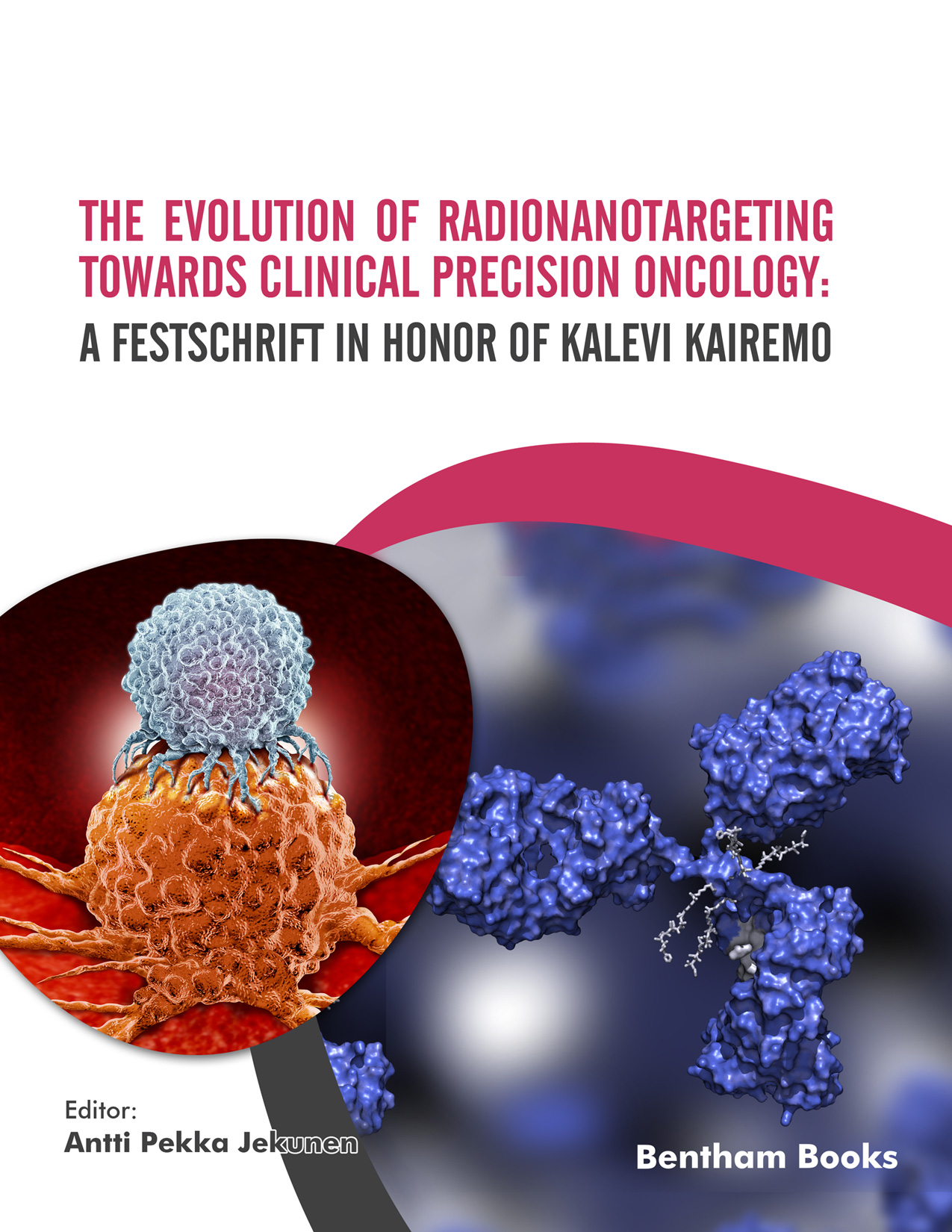The last decade has seen the emergence of radionanotargeting as a practice changing therapeutic approach in the clinic, particularly in the field of oncology. This has extended from regulatory approvals for radiolabeled peptide therapy in somatostatin-expressing tumors (1), to impressive results with radiolabeled peptides and antibodies against prostate-specific membrane antigen (PSMA) in prostate cancer patients (2), and exciting results for a broad array of radiolabeled engineered protein and peptide-based therapeutics and nanoparticles extending from preclinical studies into human trials (3-5). The breadth of clinical activity across countries and in different clinical areas clearly demonstrates the momentum for the field.
The ability of molecular imaging with radiotracers to identify targets suitable for therapy in individual patients was established decades ago with 131I as an exemplar of precision oncology, and which now extends to an impressive array of cellular, microenvironment and immune targets which can be used for therapeutic approaches (3,4). The principles of therapeutic drug development utilizing an initial imaging based approach, which eliminates the potential for error of biopsy results for assessment of genomic or protein expression profiles in tumors, has been built on painstaking validation and pioneering work over many years (5-7). The development of novel targeting and radiochemistry approaches, protein design, preclinical validation, and extension into carefully conducted human trials, has provided the basis for the current approach to treating patients utilizing targeting molecules and an image-guided, or "theranostics" approach.
In addition to the developments in targeting techniques, imaging and therapeutic radionuclide approaches, the technology developed in this field has also led to new ways to improve drug development. Through sophisticated radioimaging studies, new drugs can be assessed for biodistribution, pharmacokinetics and pharmacodynamics, which can dramatically impact patient and dose selection, and clinical development programs (6,7). This approach is being increasingly used by pharmaceutical companies and biotech as they develop new therapeutics.
"The Evolution of Radionanotargeting towards Clinical Precision Oncology" provides an overview of key advances in the field of radionanotargeting, and the directions in which this area of medicine will have an impact on patient care. Our colleague, Prof Kalevi Kareimo, has been a pioneer in this field through his research and clinical translation of novel radiolabeled therapeutics. This has required his pursuing a ground-breaking multidisciplinary approach to science, development of significant expertise across the fields of chemistry, biology, engineering, physics and clinical medicine, and the ability to assemble teams for a common scientific purpose. We have enjoyed the collaboration, scientific endeavour, and friendship of Kalevi for almost 30 years, beginning with our time spent working together at Memorial Sloan-Kettering Cancer Centre, and we can attest to his insight, determination, and commitment to the field and patient care throughout this time (Figure 1). This Festschrift book provides a wonderful outline of the field and his achievements over many years.
References
1. Strosberg J, El-Haddad G, Wolin E, et al. Phase 3 Trial of (177)Lu-Dotatate for Midgut Neuroendocrine Tumors. N Engl J Med 376(2):125-135, 2017.
2. Hofman MS, Emmett L, Sandhu S, et al. [(177)Lu]Lu-PSMA-617 versus cabazitaxel in patients with metastatic castration-resistant prostate cancer (TheraP): a randomised, open-label, phase 2 trial. Lancet 397(10276):797-804, 2021.
3. Scott AM, Wolchok JD, Old LJ. Antibody therapy of cancer. Nat Rev Cancer 12(4):278-87, 2012.
4. Kratochwil C, Flechsig P, Lindner T, et al. 68Ga-FAPI PET/CT: Tracer Uptake in 28 Different Kinds of Cancer. J Nucl Med 60(6):801-805, 2019.
5. Larson SM, Carrasquillo JA, Cheung NK, Press OW. Radioimmunotherapy of human tumours. Nat Rev Cancer 15(6):347-60, 2015.
6. Ciprotti M, Tebbutt NC, Lee FT, et al. A Phase I Imaging and Pharmacodynamic Trial of CS-1008 in Patients with Metastatic Colorectal Cancer. J Clin Oncol 33(24):2609-2616, 2015.
7. Pillarsetty N, Jhaveri K, Taldone T, et al. Paradigms for Precision Medicine in Epichaperome Cancer Therapy. Cancer Cell 36(5):559-573.e7, 2019.

Figure 1. 14th International Symposium on Radiopharmaceutical Therapy (WARMTH), Helsinki City Hall, November 2018: Homer Macapinlac, Steven Larson, Kalevi Kairemo, Andrew Scott
Andrew M. Scott
Department of Molecular Imaging and Therapy
Austin Health, and University of Melbourne
Melbourne
Australia
/
Olivia Newton-John Cancer Research Institute and School of Cancer Medicine,
La Trobe University
Melbourne
Australia
Homer A. Macapinlac
Department of Nuclear Medicine
MD Anderson Cancer Center
Houston, Texas
USA
&
Steven M. Larson
Molecular Imaging and Therapy Service
Memorial Sloan-Kettering Cancer Centre
New York, NY
USA


